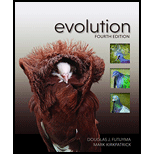
Concept explainers
a.
To explain: The reason for gene duplicates being so dead on arrival.
Introduction: The mechanism in which messenger RNA is reverse transcribed into DNA leading to the integration of DNA into the genome is called retrotransposition. The process results in the formation of duplicate genes which are different from the parental genome and also present on a different chromosome. Retrotransposition can result in the formation of pseudogenes.
a.
Explanation of Solution
Duplicative genes arising from retrotransposition does not have introns. However, due to the lack of introns, they can be easily distinguished from the parental genes, and they may not undergo post-transcriptional changes resulting in the death of the genes (pseudogenes). Therefore, that they are often dead on arrival.
b.
To explain: The duplicative genes obtained after unequal crossing over is more functional than gene arise by retrotransposition.
Introduction: The formation of duplicative genes can occur by unequal crossing over and through retrotransposition. Unequal crossing over results from misalignment of the chromosomes during meiosis ultimately leading to the process of recombination. Retrotransposition results in the formation of duplicate genes which are different from the parental genome and also present on a different chromosome. Unequal crossing over results in the formation of functional gene products while retrotransposition leads to the formation of pseudogenes.
b.
Explanation of Solution
The gene duplicates formed due to unequal crossing over is functional in nature as they have introns and exons. The gene duplicates are capable to undergo post-transcriptional modifications leading to the formation of functional protein. In case of retrotransposition gene duplicates does not have introns. However, due to lack of introns, they cannot undergo post-transcriptional modifications thereby resulting in nonfunctional gene product.
c.
To discuss: The ultimate fates of functional gene duplicates.
Introduction: The gene duplicates arising from different mechanisms after being fixed in a population can undergo several fates. The formation of duplicative genes can occur by unequal crossing over and through retrotransposition. The gene duplicates may lose their function due to deletion or may retain its original function.
c.
Explanation of Solution
Functional gene products arising from different mechanisms can undergo four different fates which are as follows:
- The redundancy of the gene duplicate may result in the deletion of the duplicate gene product.
- The gene duplicate may retain its original function. These duplicates are favored as they are able to retain their function due to which they can undergo the process of selection for increased gene expression.
- The duplicate gene product would evolve as the gene that is characterized by novel biological function.
- The parent gene along with duplicate gene products may subfunctionalize to perform the functions related to ancestral genes.
To determine: The most suitable fate of gene duplication.
Introduction: The gene duplicates arising from different mechanisms after being fixed in a population can undergo several fates. The formation of duplicative genes can occur by unequal crossing over and through retrotransposition. The gene duplicates may lose their function due to deletion or may retain its original function.
Explanation of Solution
The process of gene duplication resulting in retaining the original function of the gene is more likely to happen as the genes can undergo the process of selection for increased gene expression.
Want to see more full solutions like this?
Chapter 14 Solutions
Evolution, Fourth Edition (looseleaf)
- 22. Which of the following mutant proteins is expected to have a dominant negative effect when over- expressed in normal cells? a. mutant PI3-kinase that lacks the SH2 domain but retains the kinase function b. mutant Grb2 protein that cannot bind to RTK c. mutant RTK that lacks the extracellular domain d. mutant PDK that has the PH domain but lost the kinase function e. all of the abovearrow_forwardWhat is the label ?arrow_forwardCan you described the image? Can you explain the question as well their answer and how to get to an answer to an problem like this?arrow_forward
- Describe the principle of homeostasis.arrow_forwardExplain how the hormones of the glands listed below travel around the body to target organs and tissues : Pituitary gland Hypothalamus Thyroid Parathyroid Adrenal Pineal Pancreas(islets of langerhans) Gonads (testes and ovaries) Placentaarrow_forwardWhat are the functions of the hormones produced in the glands listed below: Pituitary gland Hypothalamus Thyroid Parathyroid Adrenal Pineal Pancreas(islets of langerhans) Gonads (testes and ovaries) Placentaarrow_forward
 Human Heredity: Principles and Issues (MindTap Co...BiologyISBN:9781305251052Author:Michael CummingsPublisher:Cengage Learning
Human Heredity: Principles and Issues (MindTap Co...BiologyISBN:9781305251052Author:Michael CummingsPublisher:Cengage Learning Biology: The Dynamic Science (MindTap Course List)BiologyISBN:9781305389892Author:Peter J. Russell, Paul E. Hertz, Beverly McMillanPublisher:Cengage Learning
Biology: The Dynamic Science (MindTap Course List)BiologyISBN:9781305389892Author:Peter J. Russell, Paul E. Hertz, Beverly McMillanPublisher:Cengage Learning
 Biology Today and Tomorrow without Physiology (Mi...BiologyISBN:9781305117396Author:Cecie Starr, Christine Evers, Lisa StarrPublisher:Cengage Learning
Biology Today and Tomorrow without Physiology (Mi...BiologyISBN:9781305117396Author:Cecie Starr, Christine Evers, Lisa StarrPublisher:Cengage Learning Human Biology (MindTap Course List)BiologyISBN:9781305112100Author:Cecie Starr, Beverly McMillanPublisher:Cengage Learning
Human Biology (MindTap Course List)BiologyISBN:9781305112100Author:Cecie Starr, Beverly McMillanPublisher:Cengage Learning Concepts of BiologyBiologyISBN:9781938168116Author:Samantha Fowler, Rebecca Roush, James WisePublisher:OpenStax College
Concepts of BiologyBiologyISBN:9781938168116Author:Samantha Fowler, Rebecca Roush, James WisePublisher:OpenStax College





